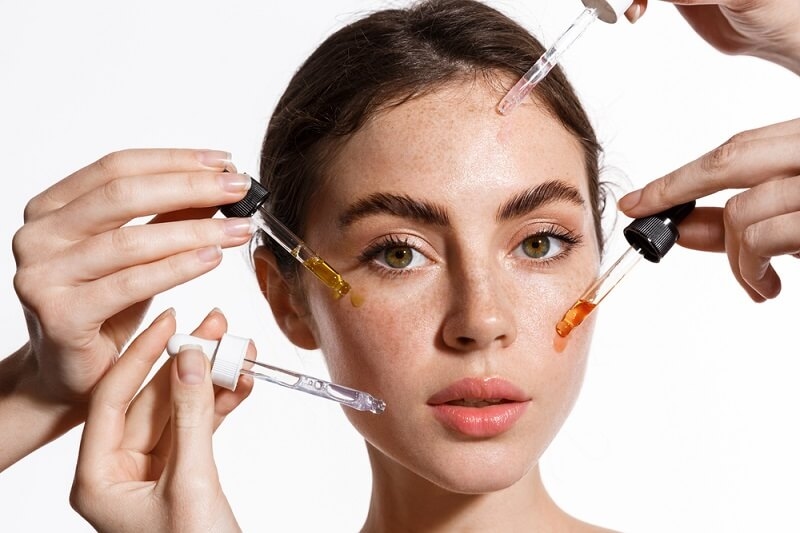
If you care about your skin, you need to care about what goes into your products. The beauty industry is full of clever marketing, but the real truth is sitting right there on the label. Whether you’re just starting your skincare routine or you’ve been layering serums for years, knowing your ingredients changes everything. This skincare ingredients guide is built to help you read, compare, and pick what works for your skin, not what’s trending on social media.
The front label is where brands try to grab your attention. Words like natural, gentle, or dermatologist-tested sound good, but most of them aren’t regulated. That means two different brands can use the same term while selling completely different formulas.
The smart move is to turn the bottle around and read the skin care product ingredients list. The first few ingredients usually make up most of the product. If your “hydrating” serum lists alcohol before hyaluronic acid, you’re not getting much hydration. If a cleanser claims to be gentle but has strong sulfates at the top, it’s not going to feel gentle for long.
Explore More: Top Skin Hydration Tips to Keep Your Skin Glowing All Day
Learning how to read an ingredient label isn’t complicated—it’s just about knowing what to look for.
When figuring out how to read ingredient labels on cosmetics, the same rules apply. Lipsticks, foundations, and even powders contain active and inactive ingredients that can either help or harm your skin.
A skin care ingredient checker can be handy, especially if you’re new to this. You paste the ingredient list into a tool, and it flags potential allergens, irritants, or pore-cloggers. It’s quick and saves you from buying something that will break you out.
But these checkers aren’t perfect. They can’t tell you how your skin will react or whether the ingredient mix will actually be effective for you. Use them as a second opinion, not the final word.
Don’t Miss: Top Benefits of Face Serum for Radiant, Healthy Skin

Here’s where it gets practical. Below are some of the most common skin care product ingredients and what they actually do. This is the part of the ingredient guide to skincare that will help you buy with confidence.
Includes glycolic, lactic, and mandelic acids. They exfoliate the surface, smooth texture, and brighten skin. They can also make your skin more sun-sensitive, so sunscreen is non-negotiable.
Oil-soluble, so it can get inside pores and clear out blockages. Best for oily or acne-prone skin.
A vitamin A derivative that speeds up cell turnover and helps reduce fine lines, wrinkles, and uneven tone. Start slow, especially if you’ve never used it before.
Best in the form of L-ascorbic acid. Brightens skin, reduces dark spots, and boosts collagen production. Works well in the morning under sunscreen.
Lipids that make up a big part of your skin barrier. Help keep moisture in and irritants out.
Chains of amino acids that can encourage collagen production and help the skin repair itself.
A moisture magnet that hydrates and plumps. Works for all skin types.
Helps fade pigmentation and even out skin tone without being as harsh as some other lightening agents.
When comparing skin care ingredients, don’t just look at the name—look at the concentration, pairing, and formulation.
Start with the basics:
Add actives slowly, introduce just one at a time, and patch test before going all in.
If you already know your skin, you can start layering:
The ingredient guide to skincare changes with your needs. Your skin in summer isn’t the same as in winter, and your product choices should reflect that.
| Function | Ingredients | Best For |
| Exfoliation | Glycolic, Lactic, Salicylic Acid | Texture, clogged pores, dullness |
| Brightening | Vitamin C, Kojic Acid, Azelaic Acid | Dark spots, uneven tone |
| Anti-aging | Retinol, Peptides, Ceramides | Fine lines, firmness loss |
| Hydration | Hyaluronic Acid, Glycerin, Ceramides | Dryness, tightness |
| Soothing | Niacinamide, Aloe Vera, Allantoin | Redness, sensitivity |
Discover More: The Most Effective Acne Skincare Routine That Works Fast
Understanding skin care ingredients is the difference between buying what works and wasting money on hype. Learn how to read an ingredient label, use a skin care ingredient checker if you need backup, and start comparing skin care ingredients based on your skin’s actual needs, not marketing claims.
Your skincare routine is only as good as its ingredients. Once you know what to look for, you can build something that works for you, season after season.
This content was created by AI